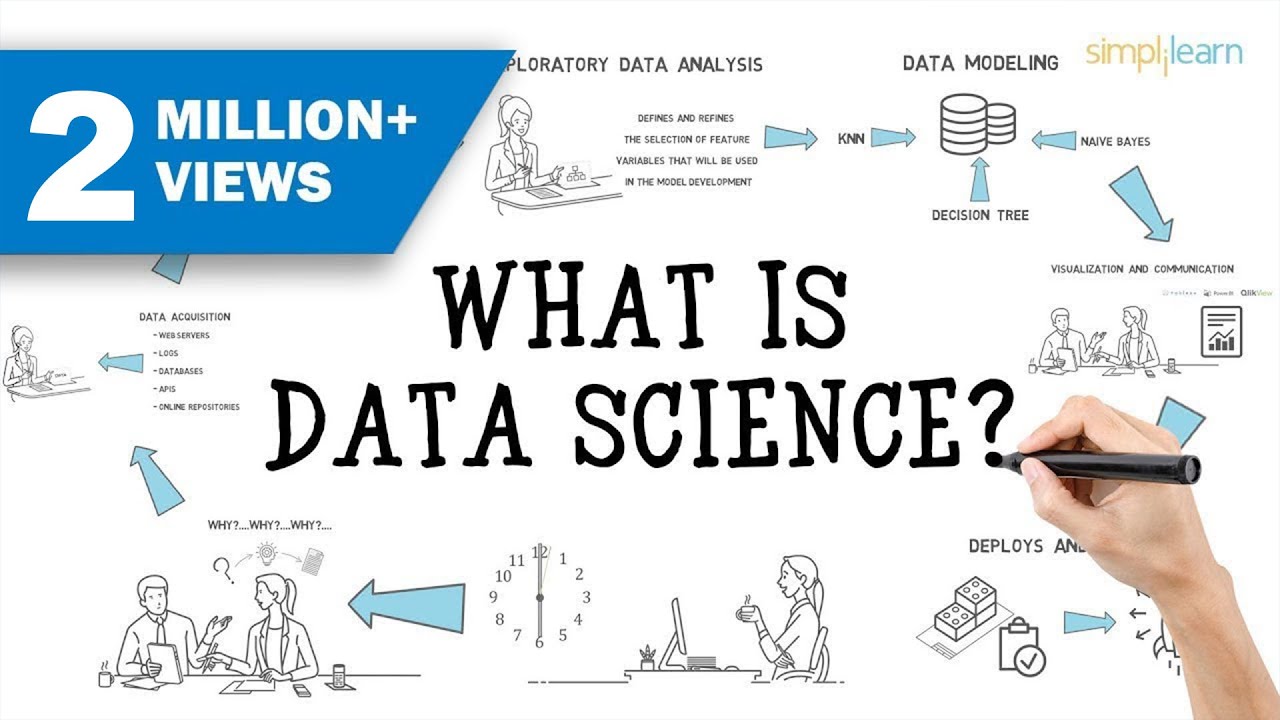What is Data Science?
Data science is an interdisciplinary field that uses scientific methods, processes, algorithms, and systems to extract knowledge and insights from structured and unstructured data. It involves a combination of statistics, machine learning, and domain expertise.
Key Steps in a Data Science Project
Problem Definition:
Clearly define the problem you want to solve.
Identify the key questions you want to answer.
Data Collection:
Gather relevant data from various sources.
Ensure data quality and completeness.
Data Cleaning and Preparation:
Handle missing values, outliers, and inconsistencies.
Format data for analysis.
Exploratory Data Analysis (EDA):
Summarize and visualize data to gain insights.
Identify patterns, trends, and anomalies.
Feature Engineering:
Create new features from existing ones to improve model performance.
Select relevant features for analysis.
Model Building:
Choose appropriate machine learning algorithms.
Train and evaluate models.
Model Evaluation:
Assess model performance using relevant metrics.
Fine-tune models to improve accuracy.
Deployment:
Deploy models into production to make predictions or decisions.
Monitor model performance and retrain as needed.
Essential Tools and Libraries
Python: A versatile programming language for data science.
NumPy: For numerical computations and array operations.
Pandas: For data manipulation and analysis.
Matplotlib and Seaborn: For data visualization.
Scikit-learn: A machine learning library for classification, regression, clustering, and more.
TensorFlow and PyTorch: For deep learning and neural networks.
A Simple Example: Predicting House Prices
Data Collection: Gather data on house prices, square footage, number of bedrooms, and other relevant features.
Data Cleaning: Handle missing values and outliers.
Exploratory Data Analysis: Visualize the relationship between features and house prices.
Feature Engineering: Create new features like house age or room density.
Model Building: Train a linear regression model to predict house prices based on the features.
Model Evaluation: Evaluate the model’s performance using metrics like mean squared error.
Deployment: Deploy the model to predict house prices for new data.
Getting Started
Online Courses: Platforms like Coursera, edX, and Udemy offer a wide range of data science courses.
Practice Projects: Work on real-world datasets to gain practical experience.
Join Data Science Communities: Participate in forums and communities to learn from experts and collaborate with other learners.
Remember, data science is a continuous learning process. Stay curious, experiment, and enjoy the journey of uncovering insights from data.
The Impact of 5G: Faster, Smarter, and More Connected
5G, the fifth generation of cellular network technology, is poised to revolutionize the way we live, work, and interact with the world. With significantly faster speeds, lower latency, and greater capacity, 5G is unlocking a new era of innovation and connectivity.
Key Benefits of 5G
Faster Speeds: 5G offers significantly faster download and upload speeds compared to previous generations,
enabling seamless streaming, gaming, and video conferencing.
Lower Latency: Reduced latency means faster response times, making real-time applications like remote surgery and autonomous vehicles more feasible.
Increased Capacity: 5G networks can handle more devices and data traffic, supporting the growing number of connected devices in the Internet of Things (IoT).
Real-World Applications of 5G
Enhanced Mobile Broadband: 5G will enable faster mobile internet speeds, allowing for seamless streaming of high-quality video content.
Internet of Things (IoT): 5G will support a massive number of connected devices, enabling innovative applications in smart cities, agriculture, and healthcare.
Autonomous Vehicles: 5G’s low latency and high reliability will be crucial for the development of self-driving cars and trucks.
Remote Surgery: 5G can enable remote surgery, allowing surgeons to operate on patients from distant locations.
Virtual and Augmented Reality: 5G will power high-quality VR and AR experiences, transforming entertainment and education.
Challenges and Considerations
While 5G offers immense potential, there are challenges to overcome:
Infrastructure Costs: Deploying 5G infrastructure can be expensive, requiring significant investments in new towers and equipment.
Spectrum Allocation: Allocating sufficient spectrum for 5G services is a complex task that requires careful planning and coordination.
Security Risks: As more devices become connected, the risk of cyberattacks and data breaches increases.
Despite these challenges, 5G is rapidly transforming the world, and its impact will be felt across industries and societies. As 5G networks continue to expand, we can expect to see even more innovative and exciting applications emerge.
